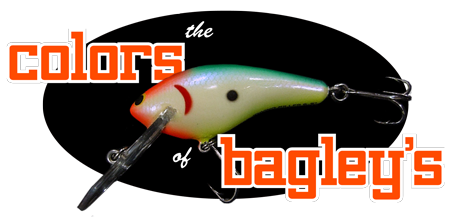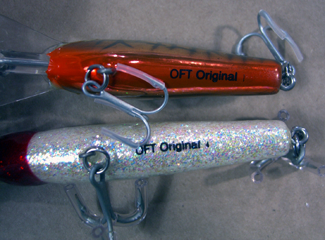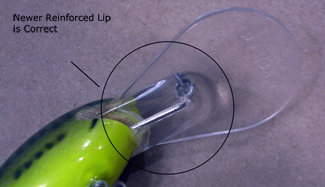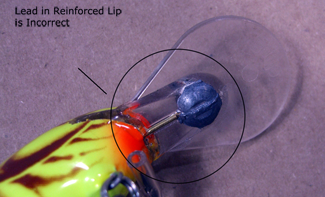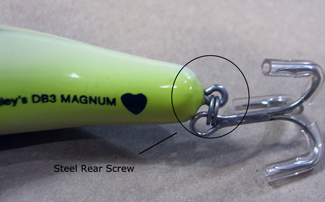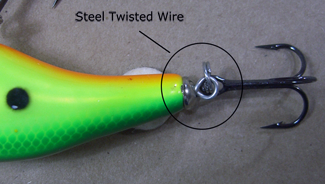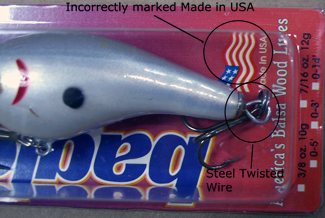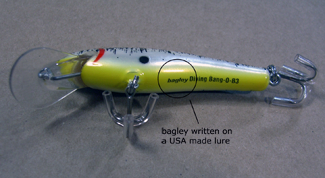Dominican-Made Bagley Lure Identification
Learning to identify the difference between Dominican Republic and Florida-made lures is an important prerequisite to collecting, buying or selling the more collectible USA-made Bagleys. The differences can often be subtle as the new owners wanted their baits to appear as close to the lures made by Jim Bagley/Bill Stuart as possible.
The easiest way to spot a Dominican lure is when the word "ORIGINAL" is stamped on the back or belly of the bait. There is absolutely no need to stamp the word "ORIGINAL" on a lure that is an original. The only time "original" was correctly used on a Florida-made Bagley was when "OFT Original" was stamped on a bait destined for the Japanese market. Below are examples of each:
Click image to view a larger picture. Click again if plus sign (+) is present.

To help stop breakage, in 1981 the thinner "lead in lip" bills were replaced with a reinforced lip that no longer had lead in it. The reinforced lip was the standard used for the remainder of the life of the company while it was located in Florida. The "lead in lip" bill was introduced again sometime in the early 2000's in an apparent attempt to mimic the deeper diving ability and action of the older Bagleys.
Click image to view a larger picture. Click again if plus sign (+) is present.

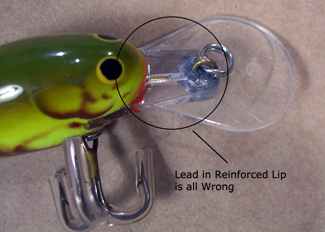
Besides the obvious lead in a reinforced lip give-a-way, there are other subtle differences that can help you determine old, from new, Bagleys. The company began using brass ties again on this lead lip version. The give-a-way here is that the middle hook hanger remained steel on these newer baits. There was also a different type of glue used to insert the bills. The glue on the newer baits was often crystal clear, unlike the cloudy glue that had been used in the past. Lastly, a lot of the Dominican baits were shipped with unsightly red hooks.
Click image to view a larger picture. Click again if plus sign (+) is present.
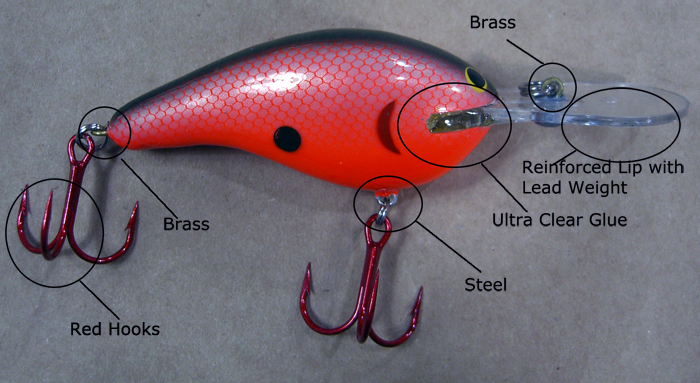
At the beginning of production in the Dominican Republic, lures were made with the reinforced lip and steel hangers, not the lead in the lip with brass hangers. The "tell" for this style Dominican is the twisted wire rear hook hanger. The oldest, all brass Bagleys had a thru-bait construction that ended with a brass wire for the rear hook hanger. When the company moved away from thru-bait construction and brass harnesses, it began using a steel screw on the rear of the bait. If the lure tie and middle hook hanger are steel, the rear hook hanger should be a screw, not twisted wire.
Click image to view a larger picture. Click again if plus sign (+) is present.
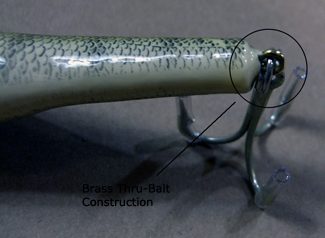
Most lures with reinforced diving lips will have "bagley's" stamped on them. If you find one with "Bagley", without the apostrophe "s" on the end, you've found a Dominican bait for sure. Confusingly however, the word "bagley" without the apostophe "s", was sometimes written elsewhere on the bait. This was common on Bang-O-Lures and Bang-O-B's in particular.
Click image to view a larger picture. Click again if plus sign (+) is present.
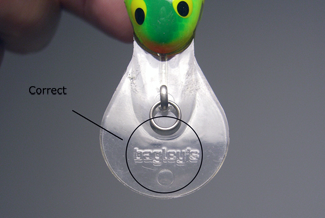
Some people incorrectly think that a metal cap behind the rear hook hanger is a feature exclusive to Dominican Republic baits. Nothing could be further from the truth. The metal cap was introduced at the Winter Haven plant and is a common component on Florida-made lures. I myself have hundreds of Winter Haven lures with metal caps. The orange, yellow and white packages prove these lures were manufactured in Winter Haven, Florida.
Click image to view a larger picture. Click again if plus sign (+) is present.

